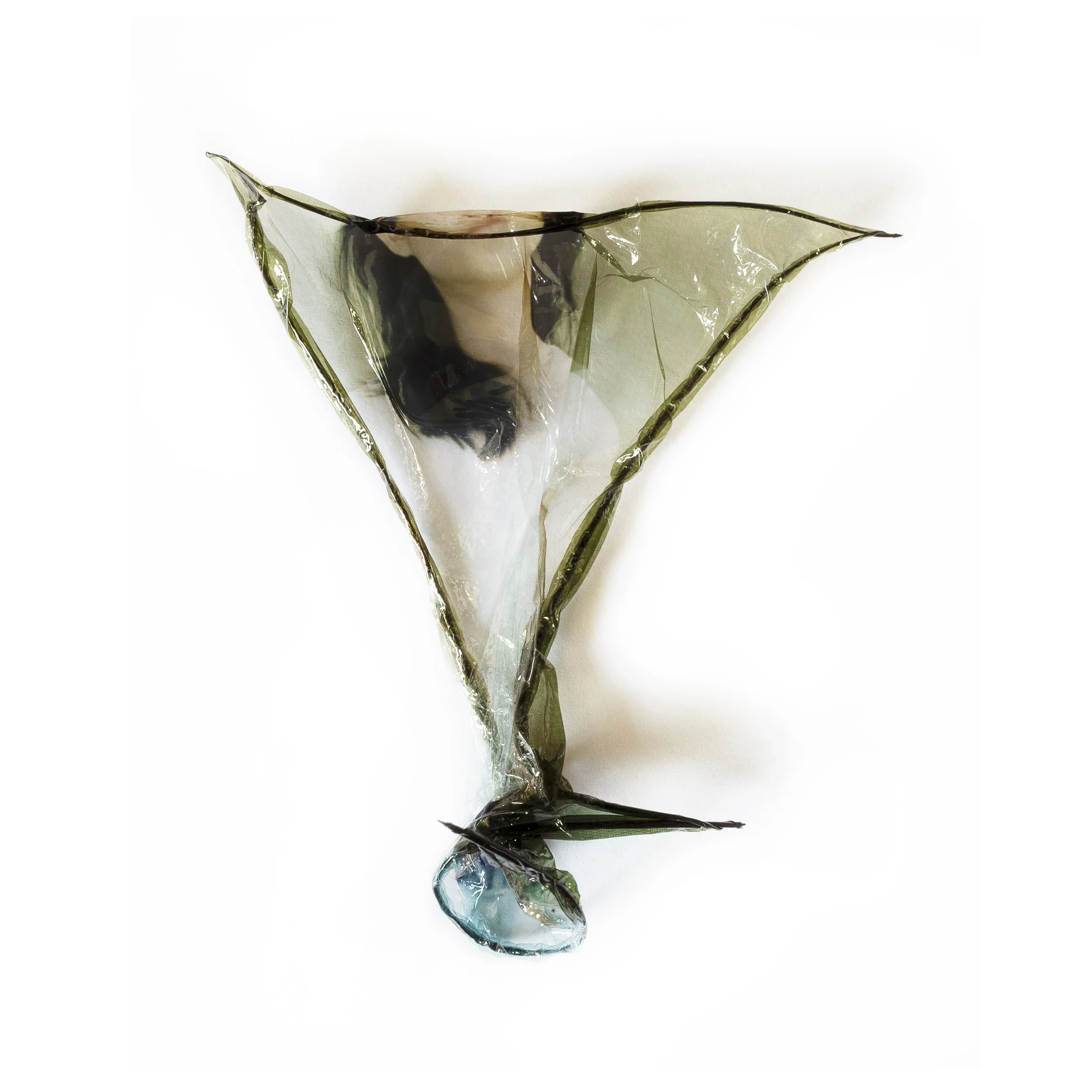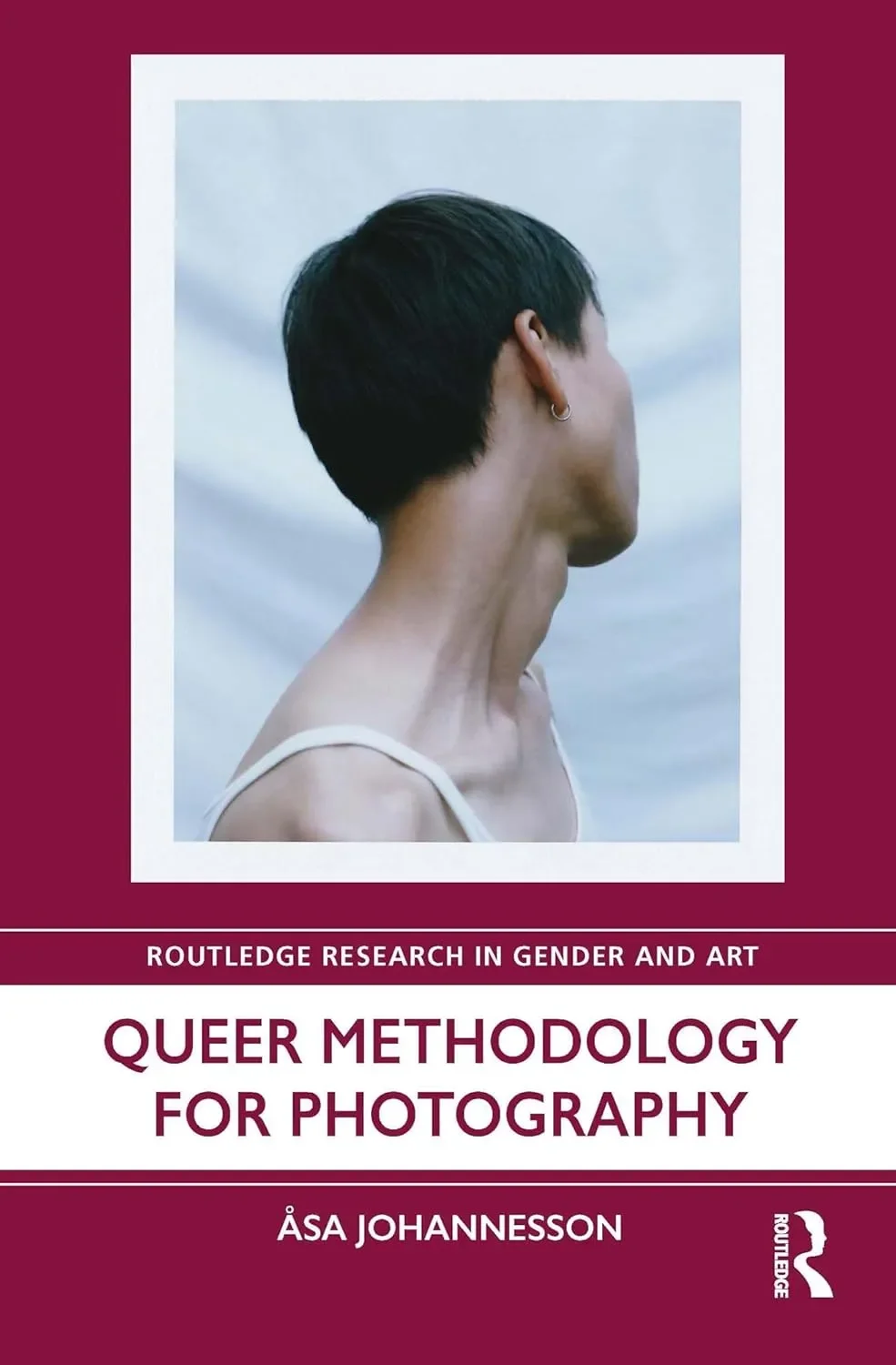‘A Very Intimate Procedure’: Åsa Johannesson’s Queer Lens in Photography
From Åsa Johannesson’s series Skin, where objects are created out of emulsion (the first layer of a polaroid image).
Of all the art forms you can redefine, photography isn’t usually in the running. You point the camera, press a button—surely that’s all there is to it?
Åsa Johannesson
Not in Åsa Johannesson’s world. The Swedish-born fine art photographer and senior lecturer at the University of Brighton has striven to turn things on their head, to invert the norm, to collapse barriers. If this were a vignette from Alice in Wonderland, we might give her work the quaint tag of ‘topsy turvy’, but given Johannesson’s lived experience and personal interests, she’s dubbed this process the ‘queering’ of photography.
‘I’m always asking; what am I allowed to do in photography? Can we access it in different mediums? Can we, for instance, create photography through writing?’
‘I’m always asking; what am I allowed to do in photography?’
Such thinking has resulted in a number of experimental projects. Currently, Johannesson is working on a book of prose poetry to complement a portraiture series. ‘You always hear the photographer,’ she explains, ‘you never hear the subject. We see through the photographer’s lens.’
By asking her sitters to write down their feelings, impressions, and even the decisions they made in dressing for the session, Johannesson opens up a new vista for understanding an image – one that blends both portrait and self-portrait just as it blends image and word.
Looking Out Looking In, by Åsa Johannesson
These snapshots become stories with extra context, like film footage with director’s commentary. Johannesson describes the making as ‘a very intimate procedure’, which certainly comes through in the prose poems. One reads:
‘I wore my boyfriend’s tank top for the shoot. It was white and it was the first thing I’d seen him in. [...] I wanted to feel like how I thought he was feeling like that day when I first met him. I thought “I hope this isn’t too romantic.”’
But this – and the other poems – are romantic in their simplicity and honesty. They are touching in their revelations of snatched memories, sweetness, and the little sores rubbed onto us by life. Johannesson’s bid to give her sitters a voice allows them an empowerment denied by even the most majestic of portraits.
‘The viewer or reader can be a component too,’ says Johannesson, ‘they can take an active role, not just be “fed” imagery. What if there was no image, just a description of an image, and whatever someone saw in their mind’s eye when they read it was the real “photograph”? Then I would be co-creating with them through my words, but there would be a different version of my picture in every person’s head.’
From the series Skin
This breaking out of moulds is Johannesson’s ‘queering’. For her, it mirrors the freeing of gender norms that Western society has experienced in the last decade or so. The catch-all term ‘queer’ once meant ‘strange’ and was used as a slur against the LGBT+ community before being reclaimed by activists. Today, it’s entered the mainstream as a malleable and positive term that denotes anything outside of the heteronormative.
‘There would be a different version of my picture in every person’s head.’
In providing ‘inclusivity beyond sexual preference (lesbian and gay)’, it is completely fluid; and can be applied as wished by the user. In Johannesson’s practice, her ‘queer lens’ also means liberating photography from the rigid one-way relationship we’re most used to.
‘I came to London in 1999,’ she shares. ‘I caught the end of the “laddy” era, with those Page 3 spreads. We were on the cusp of social media. The only gay photography was club photography, which was great, but it was often taken by people outside of the community.’
From the series Skin
This documentary of flamboyance – all sequins and leather straps – led Johannesson to create work that represented her real life in the community and that of her friends. ‘The “queer” came from my own experience—although we didn’t use that word yet,’ she notes. ‘I wanted to show a different side of who we were.’
‘All the questions we have about sexuality and gender I’m interested in applying to photography’
Her practice has developed and matured in this direction. ‘All the questions we have about sexuality and gender I’m interested in applying to photography’, she explains. In one series, Skin, she created objects out of emulsion (the first layer of a polaroid image).
These coiled-up, twirled ephemera look in turn plasticky and paper-like, frozen halfway through being burnt. They are translucent and vibrant, definite 3D objects with a 2D image glistening within, revealing and concealing at the same time. In her airy East London studio, Johannesson holds one up to the light and smiles, ‘They’re quite hard to pin down. Is it a photograph or a sculpture? There is something “queer” about it.’
This project suggests themes of ‘outsidership’. It sits outside the norms of photography... and also beyond the reach of sculpture. This emphasis on finding queerness not just in the subject of photography, but the process of image-making itself, is the root of Johannesson’s philosophy.
It is a view she has meticulously explored throughout an impressive career that includes a PhD at the Royal College of Art and exhibitions all around the world, from Shanghai to Stockholm. It’s ultimate expression, however, finds form in her 2024 seminal work for Routledge, Queer Methodology for Photography.
‘Is it a photograph or a sculpture? There is something “queer” about it.’
This book showcases the breadth of her academic knowledge, and the profound thought given by Johannesson to expand the reach of gender studies in the arts. ‘It hits upon various points I’m interested in exploring,’ she says with a mischievous grin.That spirit of exploration and experimentation is what makes it uniquely exciting to watch as Johannesson constantly test the boundaries. She shows us photography—just not as we know it.
Discover more of Åsa Johannesson’s work on her website.






